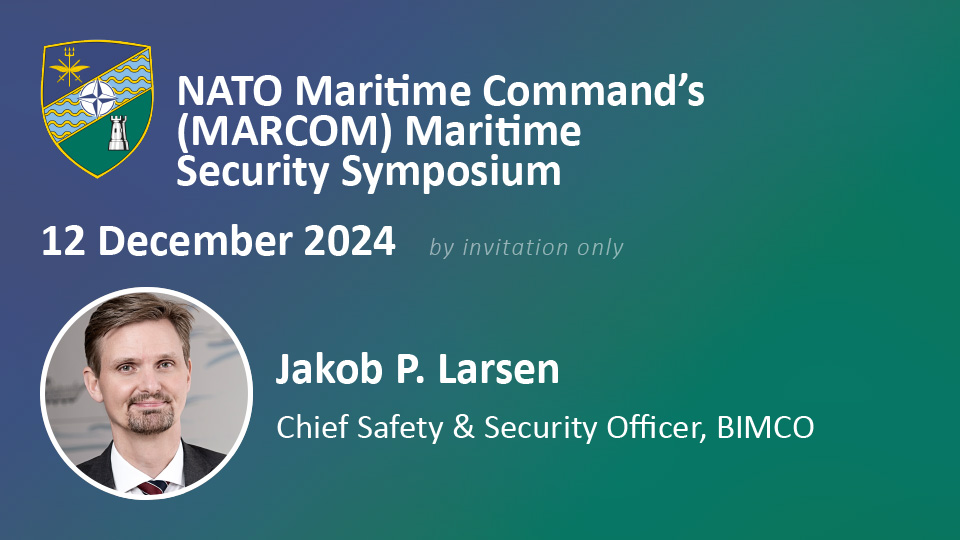United States - CTPAT Sea Carrier Security Profile guidance
Overview
United States Customs & Border Protection has informed that the Customs Trade Partnerships Against Terrorism (CTPAT) Portal’s new security profile for Sea Carries which came on line June 1, 2020, does not fully reflect the associated minimum security criteria (MSC).
United States Customs & Border Protection has informed that the Customs Trade Partnerships Against Terrorism (CTPAT) Portal’s new security profile for Sea Carries which came on line June 1, 2020, does not fully reflect the associated minimum security criteria (MSC).
To manage this misalignment, the following guidelines (which applies to CTPAT participants only) have been received by CPB:
Changes to the security profile questions
“There are a few items in the security profile that you need to either disregard or be prepared to answer and document to your CTPAT Supply Chain Security Specialist (SCSS) at a later time and/or during the validation process.
Please keep the following in mind when completing the new security profile:
1. Disregard these four questions in the current security profile (i.e. no need to answer them):
1. Procedural Security - Are security breaches included in a Vessel Security Plan (VSP)?
2. Procedural Security - Are unannounced third party security audits performed on high risk routes? What are the third party audit procedures, how often are they performed and how are security deficiencies addressed? This is a requirement.
3. Physical Security – Are vessels equipped with video surveillance systems that have night vision capability? Are the system recordings stored? How are the recordings protected?
4. Personnel Security - Are crew members rotated on high risk routes in order to prevent internal conspiracies and crew from working the same route on consecutive trips? Is this policy included in written procedures? This is a requirement.
2. Implement and document these three criteria which are currently not reflected in the security profile:
1. 7.36 – Must – Procedural Security – To address security vulnerabilities for voyages in high-risk areas (as defined by the Member’s CTPAT risk assessment), Sea Carriers must conduct CTPAT-focused company security audits annually; following specific CBP guidance/instructions to the Sea Carrier; or following a significant security incident if the findings of the internal post-incident analysis warrant it. These audits must be documented and be made available to the SCSS upon request. Any security deficiencies identified by the audits must be addressed as soon as practicable.
2. 7.35 – Must – Procedural Security – CTPAT sea carriers must have written procedures to ensure the implementation of measures to secure all means of access to the ship, including: access ladders; access gangways; access ramps; access doors, side scuttles, windows and ports; mooring lines and anchor chains; and cranes and hoisting gear. Refer to MTSA -33CFR 104.265 and the ISPS Code, Part B – Ship Security Plan, section 9.9, for guidance.
3. 9.18 – Must – Physical Security – As required by the Maritime Security Act (MTSA – 33 CFR 104.285), Sea Carriers must have the capability to continuously monitor the ships, the restricted areas on board the ships, and the areas surrounding the ships through a combination of lighting, watch keepers, security guards, deck watches, waterborne patrols, automatic intrusion detection devices, or surveillance equipment as specified in the ship or vessel security plan.
CTPAT Maritime Security Unit (MSU) created
In order to better focus on the maritime environment, and be able to provide tailored support to CTPAT Sea Carriers and Marine Port Authorities and Terminal Operator Members, the program recently created the CTPAT Maritime Security Unit (MSU). This unit was also established to increase uniformity across the program field offices, facilitate the timely resolution of security issues affecting our maritime Members, and further strengthening critical program knowledge on key maritime industry practices. The MSU is made up of seasoned CTPAT Specialists with expertise in the maritime environment and it is under the leadership of Supervisory Supply Chain Security Specialist Ray Monzon (CTPAT Miami Field Office). The Supply Chain Security Specialists in this unit will be working with each of the Sea Carriers in the program to personally answer any questions or concerns they may have as they complete their security profiles.
The program will continue to work with CBP’s Office of Information and Technology to update the sea carrier security profile. We will notify our CTPAT Sea Carrier Members when the update to the security profile has been completed. In the meantime, CTPAT will be affording companies the needed flexibility to complete the current security profile. We are aware of the challenges most companies are experiencing given the current health and economic crisis.
Thank you for your patience and understanding. And for helping CTPAT secure the international supply chain.”
For more guidance on CTPAT please follow below link.
Feedback or a question about this information?
VPS Bunker Alerts
Veritas Petroleum Services (VPS) publish regular Bunker Alerts based entirely on fuel samples and have kindly permitted BIMCO’s Members to access this information.
The Bunker Alerts are not intended to be an evaluation of overall bunker quality in the port or area concerned, but usually highlight a specific parameter within the fuel which has raised a quality issue.
Latest ice reports for members
Latest piracy reports
Latest industry releasable threats
ELSEWHERE ON BIMCO
Contracts & Clauses
All of BIMCO's most widely used contracts and clauses as well as advice on managing charters and business partners.
Learn about your cargo
For general guidance and information on cargo-related queries.
BIMCO Publications
Want to buy or download a BIMCO publication? Use the link to get access to the ballast water management guide, the ship master’s security manual and many other publications.
About a new business partner
We can help members check new business partners. We also help to recover millions of USD (undisputed) funds every year.





